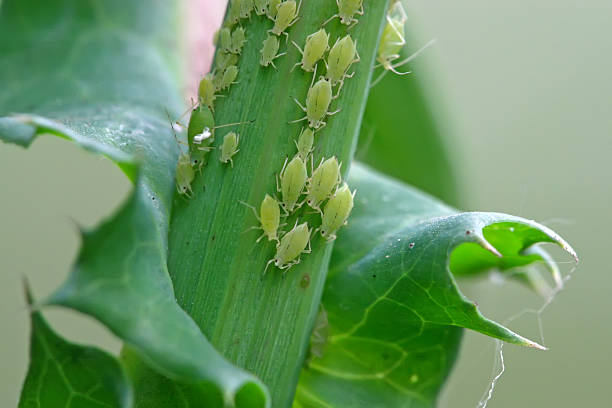Are Angelonia Plants Deer Resistant?
Angelonias are resistant to deer damage. Forrest Appleton has been testing this plant for several years and has discovered that it is truly deer-resistant. The only problem is that when planting all supposedly deer-resistant plants in areas where deer are active, some defensive measures must be taken (and there is always a but). Deer are curious creatures who feel it is their “duty” to sample any new foods introduced to them. Suppose you are unable (or do not wish to) physically exclude the deer from your property using a method such as fencing. You should use one of the deer repellants available on the market until the deer become accustomed to the plant’s presence in their foraging territory. It could take up to 6 months to complete this process. We have found success with a product called Liquid Fence.

Table of Contents
What are Common Problems to Angelonia?

Aphids
These disease-carrying sucking insects, which can be green, red, black, or peach, feed on the undersides of leaves. Foliage is coated in an adhesive substance that is attractive to ants.
Solution: suggests that you encourage aphid-eating predators like lady beetles and wasps into your garden. Another option is to use an insecticidal soap or a powerful spray to remove them.
Botrytis
Foliage and stems infected with Botrytis will develop a gray mold. It thrives in wet, cool weather.
Solution: Watering during the night is discouraged, and watering directly on the plant is discouraged, according to Burpee. Make certain that the plants are well ventilated. For fungicide recommendations, contact your local Cooperative Extension Service.
Damping Off
It’s very common to start plants from seed to have them die off. When the seedling grows up, it looks healthy. Then it dies for no clear reason. An organism that grows in moist soil and the air above 68°F (20°C) causes damping. This happens when there’s enough moisture, and the soil and air are wet and warm enough for this organism to thrive. As a rule of thumb, the soil is too wet or has a high amount of nitrogen fertilizer in there.
Solution: You should keep your seedlings well-watered but not overwater them. It would help if you thinned out your seedlings to avoid overcrowding. You should thoroughly wash your containers with soapy water and rinse them with a 10% bleach solution after using them to plant your seeds.
Powdery Mildew
A fungus disease called powdery mildew grows on the tops of leaves in humid climates. With a white or greyish surface, the leaves may curl.
Solution: To avoid powdery mildew, keep plants well-spaced and pruned to allow adequate air circulation. For fungicide recommendations, contact your local Cooperative Extension Service.
Root Rots
Numerous pathogens can cause root rot in both young and mature plants.
Solution: Plants that have been infected should be removed and disposed of. The soil should be well-drained. Angelonia should not be replanted in the same spot next year. Get advice from your local Cooperative Extension Service.
Spider Mites
Tiny spider-like pests, the size of a grain of pepper, are known as spider mites. They can be red, black, brown, or even yellow. It is believed that they feed by sucking on leaves and injecting toxins that cause white spots to appear on the leaves. The plant often has visible webbing. Foliage turns yellow and dries out, becoming stippled and flaky. Arid environments are ideal for their rapid growth and thriving.
Solution: A strong spray can help control spider mites every other day. Use insecticidal soap or hot pepper wax as alternatives. For miticide recommendations, contact your local Cooperative Extension Service.
Virus
Leaf mottling that is tight and dark green is the most common symptom of a virus. The young leaves may be bundled. It is possible for young plants to turn yellow and to become stunted.
Solution: Handling is an easy way to spread this disease. Rid the area of any infected plants and healthy ones alike.
Whiteflies
When plants are disturbed or brushed against, whiteflies, which are tiny white flying insects, rise to the surface in a cloud.
Solution: It isn’t easy to keep them under control without chemicals. Use insecticidal soap or hot pepper wax as alternatives. For pesticide recommendations, contact your local Cooperative Extension Service.
Solutions are suggested by Burpee.
